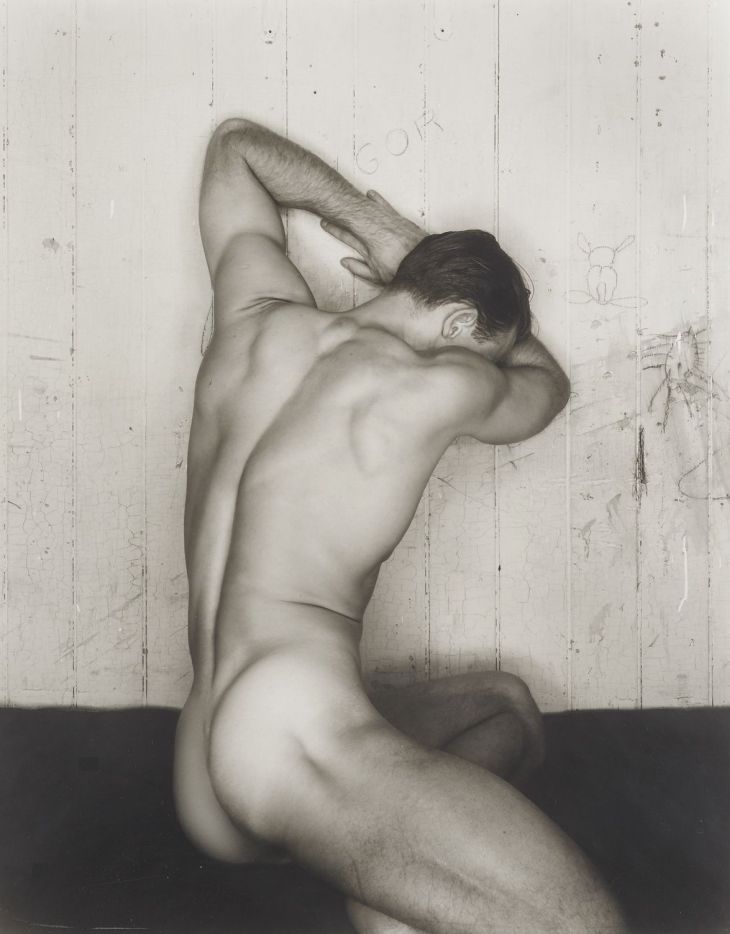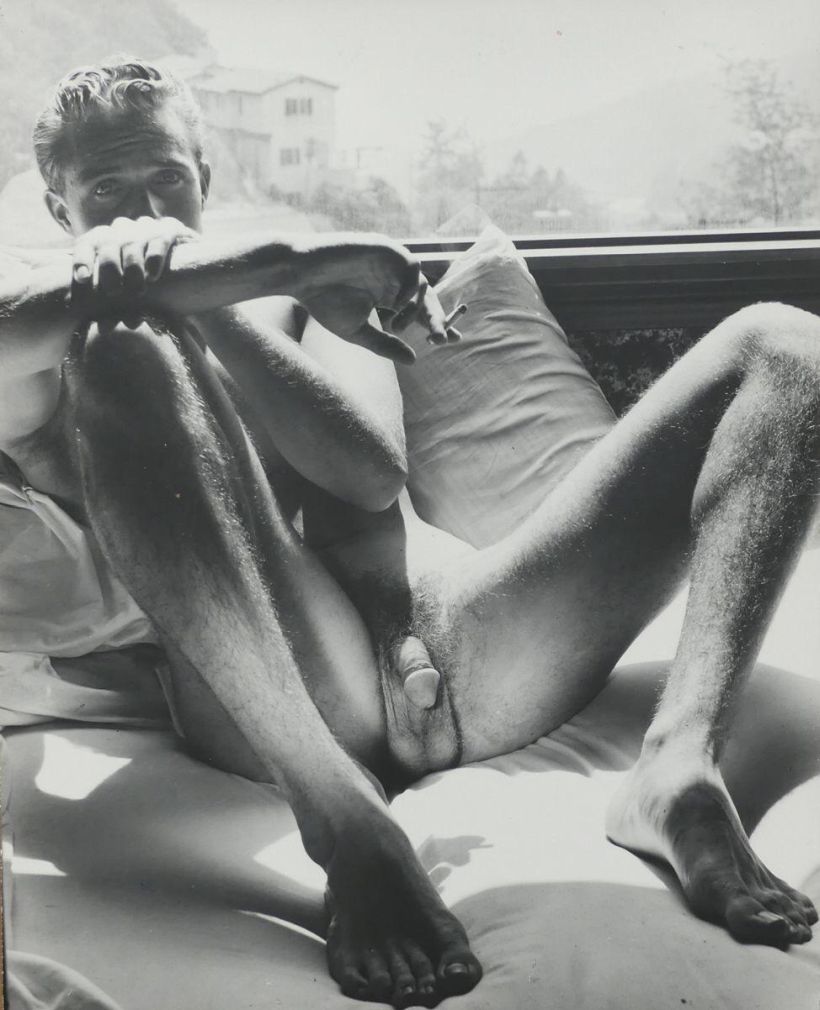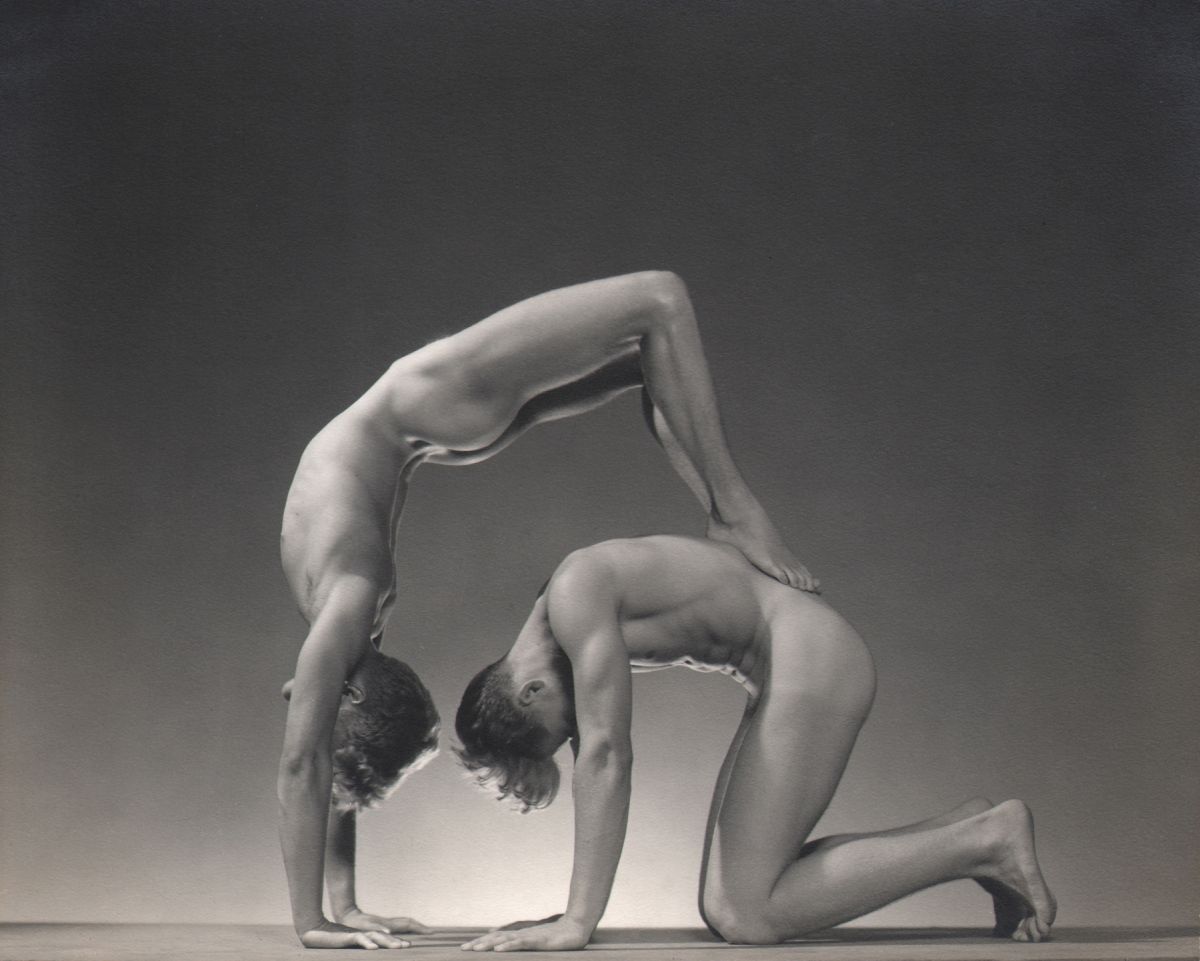George Platt Lynes
Yul Brynner
Glenway Wescott, Platt Lynes & Paul Cadmus, photographed on Fire Island in 1941
Frederick Ashton with dancers Maxwell Baird, Floyd Miller, and Billie Smith for Four Saints in Three Acts, 1934.
Photographer George Platt Lynes was born in New Jersey in 1907 and attended the Berkshire School in Massachusetts, graduating in 1925. Although he was interested in photography, his first career goal was to be a writer. Although he went on to publish a literary journal, and opened his own bookstore in New Jersey, neither project brought him much success or creative fulfillment.
Circumstances intervened however when Lynes inherited a studio full of photographic equipment. This was the sign he needed to change his career focus to art and photography. Lynes began shooting dancers through his friendship with one of the co-founders of the School of American Ballet. Lynes became the principal photographer for the school which later became known as the New York City Ballet.
From the beginning, Lynes viewed the world, including the world of dance, through his own unique lens. While most photographers shot dancers on stage, capturing their bodies in movement during performances, Lynes shot them in studio. Lynes passion was capturing the male form with a focus on the interplay of light and shadow and this proved especially compelling when the subject was ballet dancers.
Although is images of dancer brought his success and fame, and one of the Museum of Modern Art's first exhibitions showcasing photography, his most personal work featured his images of the nude men. What's both sad and fascinating is that while Lynes was alive, most weren't aware or ever saw his collection of male nudes. Because of the attitudes towards homosexuality at the time, while alive, the artist kept most of his nude work private and hidden from pubic view.
Lynes did share his work with a few people he trusted, including his friend Alfred C. Kinsey. Kinsey was the founder of the Institute for Sex Research. (The Kinsey institute). After his death in 1955, Lynes left over much of his collection of nudes work to the Institute.
I was especially drawn to Lynes focus on that interplay between light and shadow. I also love the influence on dance in his work and incredible lines and poses he captured. The incredible lines and architectural elements are on full display, especially when he was shooting multiple models. The bodies intertwine in an graceful, yet incredibly erotic way.
There are many sources of information and places to now enjoy Lynes work. One of the most expansive for me, especially when looking for images for this piece, ended up being e-bay. The on-line auction site had a huge array of images and prints for sale and I found most of the images featured here on the site.
















1 comment:
OMG Yul Brenner!!
Post a Comment